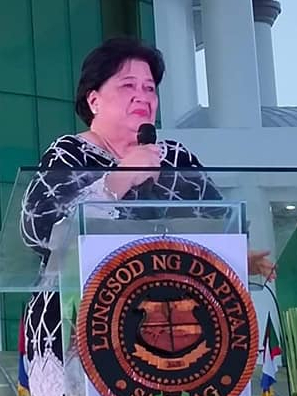Zamboanga Peninsula
Zamboanga Peninsula is a region in the Philippines located in the western part of the island of Mindanao. It is designated as Region IX. The region is composed of three provinces: Zamboanga del Norte, Zamboanga del Sur, and Zamboanga Sibugay, and the highly urbanized city of Zamboanga City serves as the regional center. The peninsula is bordered by the Sulu Sea to the west and the Moroland Sea to the south, making it a strategic and culturally diverse area.
Geography[edit | edit source]
The Zamboanga Peninsula is known for its diverse topography, featuring a range of coastal plains, valleys, and highlands. The region is also home to Mount Malindang in Zamboanga del Norte, a declared ASEAN Heritage Park due to its rich biodiversity. The peninsula's coastline is dotted with bays and coves, offering beautiful beaches and marine biodiversity that contribute to its tourism and fishing industries.
History[edit | edit source]
The history of the Zamboanga Peninsula is marked by its role as a melting pot of cultures, including indigenous tribes like the Subanen, and influences from Muslim, Spanish, and American periods. Zamboanga City, known as the "City of Flowers," was historically a bastion of Spanish presence in the south, evident in its old fort, Fort Pilar, and the widespread use of Chavacano, a Spanish-based creole.
Economy[edit | edit source]
The economy of the Zamboanga Peninsula is diverse, with agriculture, fishing, and forestry being the mainstays. The region is a major producer of sardines, and its agricultural products include coconut, rubber, and rice. Zamboanga City is also a hub for trade and industry in the region, hosting a freeport and economic zone that attracts both local and foreign investment.
Culture[edit | edit source]
The cultural landscape of the Zamboanga Peninsula is a vibrant tapestry reflecting its historical influences. Festivals such as the Hermosa Festival in Zamboanga City celebrate this cultural diversity. The region is also known for its traditional crafts, including weaving and metalwork, which are deeply rooted in the indigenous and Muslim heritage of the area.
Challenges[edit | edit source]
Despite its natural and cultural riches, the Zamboanga Peninsula faces challenges such as poverty, conflict, and environmental degradation. Efforts are ongoing to address these issues through sustainable development, peace-building initiatives, and conservation efforts to protect its natural resources.
See Also[edit | edit source]
This article is a Philippines-related stub. You can help WikiMD by expanding it!
Search WikiMD
Ad.Tired of being Overweight? Try W8MD's physician weight loss program.
Semaglutide (Ozempic / Wegovy and Tirzepatide (Mounjaro / Zepbound) available.
Advertise on WikiMD
|
WikiMD's Wellness Encyclopedia |
| Let Food Be Thy Medicine Medicine Thy Food - Hippocrates |
Translate this page: - East Asian
中文,
日本,
한국어,
South Asian
हिन्दी,
தமிழ்,
తెలుగు,
Urdu,
ಕನ್ನಡ,
Southeast Asian
Indonesian,
Vietnamese,
Thai,
မြန်မာဘာသာ,
বাংলা
European
español,
Deutsch,
français,
Greek,
português do Brasil,
polski,
română,
русский,
Nederlands,
norsk,
svenska,
suomi,
Italian
Middle Eastern & African
عربى,
Turkish,
Persian,
Hebrew,
Afrikaans,
isiZulu,
Kiswahili,
Other
Bulgarian,
Hungarian,
Czech,
Swedish,
മലയാളം,
मराठी,
ਪੰਜਾਬੀ,
ગુજરાતી,
Portuguese,
Ukrainian
Medical Disclaimer: WikiMD is not a substitute for professional medical advice. The information on WikiMD is provided as an information resource only, may be incorrect, outdated or misleading, and is not to be used or relied on for any diagnostic or treatment purposes. Please consult your health care provider before making any healthcare decisions or for guidance about a specific medical condition. WikiMD expressly disclaims responsibility, and shall have no liability, for any damages, loss, injury, or liability whatsoever suffered as a result of your reliance on the information contained in this site. By visiting this site you agree to the foregoing terms and conditions, which may from time to time be changed or supplemented by WikiMD. If you do not agree to the foregoing terms and conditions, you should not enter or use this site. See full disclaimer.
Credits:Most images are courtesy of Wikimedia commons, and templates, categories Wikipedia, licensed under CC BY SA or similar.
Contributors: Prab R. Tumpati, MD






